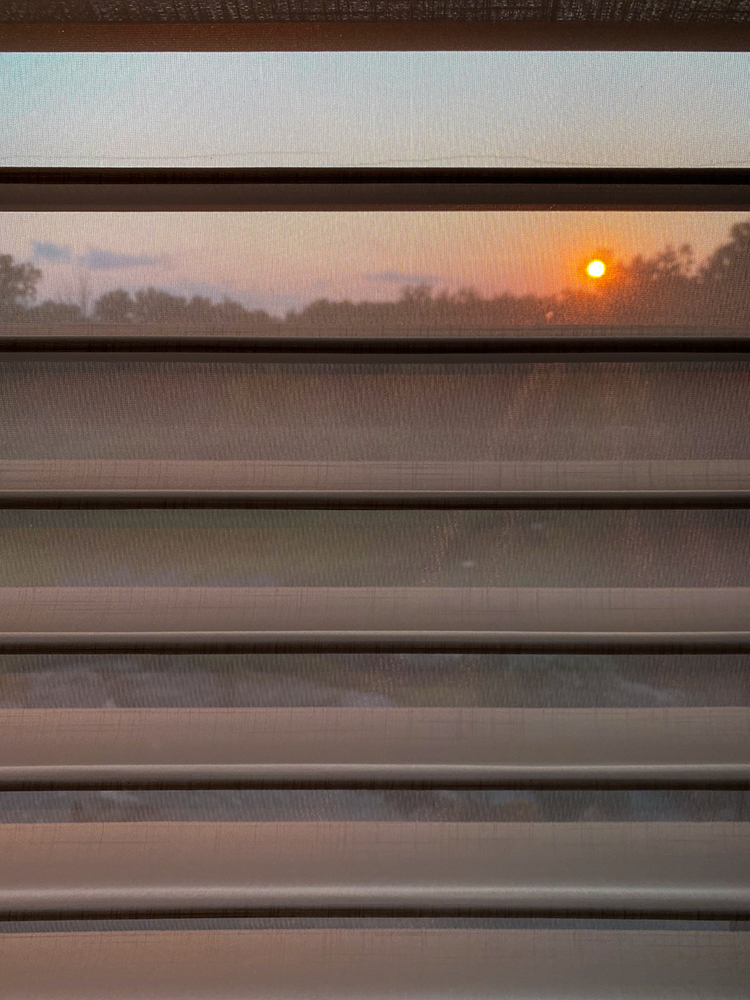Don’t worry. I’m not going to write about Ivan the Terrible today, on his birthday. Heavens knows I’ve done it enough over the years. I know, I know. He was Ivan. He was terrible. What’s more to know?
I was more interested to find out that on this day in 1609, Galileo demonstrated his first telescope to Venetian lawmakers. I’m sure it must have been a star-studded event. Okay, I promise. That’s my last pun for the day too.
Anyway, when I heard about the Venetian lawmakers or Venetian anything for that matter, I always think of Venetian Blinds. Yes. Window blinds. The little slatted wonders that light up our world or turn it back to the dark. But I always wonder how in the world they ever came from Venice. I’ve never been there, but I’ve seen the photos. They seem more concerned with their gondolas, what with all the water everywhere you turn.
So you know me. I checked. It turns out my suspicions were correct. Venetian Blinds are not from Venice. Before the blinds came into view, like hundreds and hundreds of years before, primitive societies used wet cloths to shade windows. This had a cooling effect on their abodes. In Egypt, they used to gather reeds to block the light from their windows. And in China, they did the same thing, but with bamboo.
Back to the blinds. There is a book written in 1941, by a guy named Thomas French, on this very topic. He states that Venetian traders discovered the window blinds in Persia. Yes, way over in Persia, which is now modern-day Iran. That is roughly 2,900 miles if you go as the crow flies. But they may not have crows in Iran.
Anyway, the traders brought the blinds to Venice. Then, in the mid-1700s, Venetian slaves were all granted liberty. And those guys must have picked the blinds up by the armfuls and taken them to France, creating an entire industry there, selling window blinds from the original Persia to Venice, to France. Of course, the Parisians thought they were originally from Venice because of those enterprising freed slaves. So they named them Venetian Blinds. Oui. Oui.
Back then, these blinds must have been better than sliced bread. A whole blind craze, if you will. In 1761, Venetian blinds were used in St. Peter’s Church in Philadelphia, Pennsylvania, in the United States. And then, a man named John Webster, who was a trader from London, popularized these Venetian blinds throughout the United States. They give the date as 1767. It must have been a monumental year for him.
There is a painting by J.L. Gerome Ferris titled, “The Visit of Paul Jones to the Constitutional Convention.” (1787). It shows Independence Hall in Philadelphia. I know the excitement has been overwhelming thus far, but guess what. The painting featured Venetian blinds when the Declaration of Independence of the United States was signed. Hoo-rah.
Probably the best part didn’t come until 1841. That is when John Hampson of New Orleans invented the little mechanism that lets people easily adjust the slats. And the rest is history. They’ve been popular on American windows, in some form or another, ever since.
I think we should start a petition to change the name to Persian Blinds, just to set the record straight. And. By now, most of you are probably wishing I’d written about Ivan the Terrible again. He was Ivan. And he was terrible.
Either way, maybe we should all let a little light shine through today. And. Um. Don’t be like Ivan.
========
“We can easily forgive a child who is afraid of the dark; the real tragedy of life is when men are afraid of the light.”
― Plato
==========
“Stars and shadows ain’t good to see by.”
― Mark Twain, The Adventures of Huckleberry Finn
==========
“The sun does not abandon the moon to darkness.”
― Brian A. McBride, Dominion
==========
